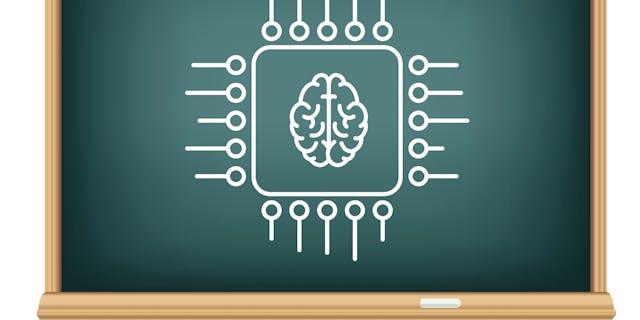Educators around the world are shifting into learning and organizing mode in response to the release of ChatGPT and other new AI chatbots that have brought a mix of excitement and panic to education.
In the past few weeks, education groups, schools and colleges have teamed up to offer resources for educators and draft policy papers in response to the sudden rise of so-called generative AI tools, chatbots that can compose answers to questions that sound like they are written by a human.
Perhaps the largest of these efforts is TeachAI, a quickly-convened partnership of major education groups including the World Economic Forum, National Association of State Boards of Education, National School Boards Association, Code.org, Educational Testing Service, Khan Academy and ISTE (EdSurge is an independent newsroom that shares a parent organization with ISTE. Learn more about EdSurge ethics and policies here and supporters here.); education ministries including those in Brazil, Germany, Kenya, Malaysia, South Korea and the U.K.; and tech companies building AI tools, including Amazon, Microsoft, and OpenAI, the maker of ChatGPT.
The group plans to produce reports and guidelines for using AI in education; make policy recommendations for incorporating AI in school curriculum standards, courses, tools, assessments, and professional learning; and establish a global framework for computer-science curriculum that includes AI.
“Part of the reason to do this as a group effort is to start talking about things that can only be done by a group effort,” says Hadi Partovi, CEO of Code.org, who is helping to organize the TeachAI effort. He says the strength of the effort is the inclusion of both education groups and the companies making the latest AI tools.
At the center of the trend is ChatGPT, which was released in November and is the fastest-growing app of all time, now claiming more than 100 million users. The free tool has sparked concern by many educators because many students are using it to do their homework for them in ways that are difficult to detect. But plenty of instructors, even some with concerns, see promise for the technology as an aid to education, and many experts say the quick adoptions means that such chatbots will likely be part of the workplace of the future that students should know about.
Other efforts announced by educators in recent weeks include:
- New York University’s Center for Responsible AI and the New York Public Library are launching the All Aboard! Primer, a comprehensive guidebook designed to ensure inclusive instruction on artificial intelligence for teachers.
- The University of Central Florida is organizing a national conference scheduled for September on how AI is shaping the future of college.
- The University of Michigan, in partnership with Coursera, is running a free online “teach-out” for educators and others who want to understand how AI chatbots work and what impact they might have on society, led by professors across disciplines including social sciences, medicine, computer science and others.
- Stanford University’s Graduate School of Education is building a collection of curricular resources about AI for teaching that it calls the CRAFT project.
Some compare the level of self-organizing and resource sharing around AI to the early days of the COVID-19 pandemic, when educators around the world suddenly had to shift to remote teaching because of sudden shuttering of school and college buildings for health reasons.
“Emotionally the comparison to COVID remote learning is apt,” says Kevin Yee, director of the Faculty Center for Teaching & Learning at the University of Central Florida. Like in the early days of the pandemic, educators who learned of ChatGPT mid-semester quickly realized that some of how they’d been teaching for a long time would no longer work, he says. “There’s an emotional toil of realizing that you have to reinvent teaching. And now, there’s been another new thing that means you can’t just do business as usual and expect students to learn,” he adds.
Yee says that faculty he’s talked to fall into two camps. There are those who focus on trying to quickly adopt tools that might detect student work that was written by chatbots. And then there is a larger group that sees the new AI as a spark for a wider change in how they think about teaching and assessing student work.
The challenge of that larger reshaping is figuring out what guides the work.
“If you imagine how would you design education today for the age of AI,” says Partovi of Code.org, “we’d not just change the curriculum, we’d change how we grade, learning objectives, what we teach, the purpose of education, and how we assess how students learn, and what they learn.”
That’s a tall order. Of course for some educators, the reason to join a conference or teach-out, or read a resource guide, is to handle the day-to-day challenges of teaching in the face of new AI tools that few were prepared for.
And in some cases, they’re just using it to help with routine tasks, such as one teacher who commented in the University of Michigan teach-out on AI:
“As an educator, I use ChatGPT as a personal assistant. For example, teachers are asked to write positive letters home, I asked ChatGPT to act as a teacher and generate a template for a positive letter home. And it gave me a great template to use that I can personalize for each student. It is a great time saver for those tasks that take up time.”


